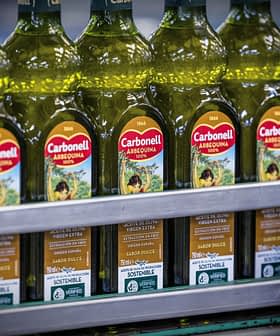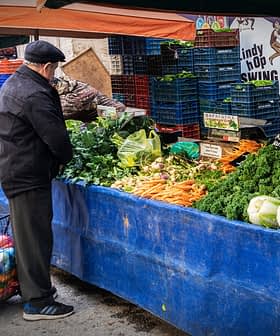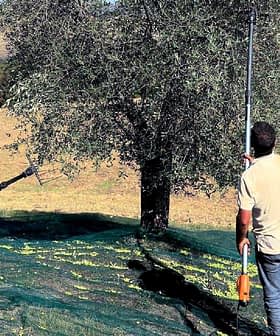A new study from nutrition researchers at Anglia Ruskin University, published in Nutrients, is the first to examine the exercise benefits of drinking olive fruit water.
Olive fruit water is traditionally a waste product created during the production of olive oil. The olives contain polyphenols, some of which are powerful antioxidants.
We found reduced oxygen cost and improved running economy… indicate (drinking olive fruit water) could potentially benefit those who are undertaking regular aerobic exercise training
According to Science Daily, OliPhenolia is a commercially available fruit water that contains polyphenols and is especially rich in hydroxytyrosol.
In the study, 29 recreationally active participants consumed OliPhenolia or a placebo for 16 days. The study found that OliPhenolia consumption improved breathing at the beginning of running and oxygen consumption at lower intensity levels.
See Also:Health NewsWhile respiratory parameters were largely unaffected at higher intensity, participants perceived exertion as easier.
“This initial study into olive fruit water demonstrated potential antioxidant effects and improved exercise efficiency,” Justin Roberts, the study’s lead author and an associate professor of health and exercise nutrition at Anglia Ruskin University, told Olive Oil Times.
“We need to do more research to understand the important health and exercise benefits of natural sources of antioxidants such as olives,” he added.
Roberts said that he has long been interested in the exercise benefits of consuming polyphenols, especially those found in cherries and beetroots.
“To gain similar benefits from olives, you would have to consume large quantities daily, which isn’t realistic, so we were keen to test this concentrated olive fruit water,” he told Science Daily.
“Like olive oil, it contains hydroxytyrosol, but this olive fruit water is a sustainable by-product,” Roberts added. “It’s typically thrown away during the production of olive oil.”
However, he said the researchers found a company in Italy, Fattoria La Vialla, a biodynamic farm in Tuscany, who decided to turn their wastewater into a dietary supplement.
“We found reduced oxygen cost and improved running economy, as well as improvements in acute recovery, indicate it could potentially benefit those who are undertaking regular aerobic exercise training,” Roberts said, noting that polyphenols are poorly absorbed and highly variable from one individual to the next.
Roberts intends to conduct further research, including whether this product may be helpful for marathon training and recovery and testing its benefit in suppressing exercise-related inflammation.
“This study showed that a supplement made from olive oil wastewater that contains the phenols of olive oil can improve exercise performance,” Mary M. Flynn, a research dietitian and associate professor of medicine and founder of The Olive Oil Health Initiative of the Miriam Hospital at Brown University, told Olive Oil Times.
“During exercise, the ability to use oxygen as quickly and for as long as possible is a distinct advantage,” she added. “This study showed that two-fluid ounces per day of the olive oil wastewater supplement in 16 days improved oxygen use in recreational athletes.”
Flynn also highlighted the issue of taste: “While the taste of the supplement was not addressed and due to the high phenol content, it is likely bitter, as only a small daily amount would be needed to potentially provide exercise improvement makes this supplement a promising product that should be further explored.”
“This is an intriguing study, and I look forward to more research to understand the bioavailability and metabolism,” added Layne Lieberman, a food and nutrition consultant and author of Beyond the Mediterranean Diet: European Secrets of the Super-Healthy. “What is the complete nutritional profile of olive fruit water? How are the phenols being absorbed and utilized by the body to improve athletic performance?”
“How the olives are handled, the terroir, processing, variety, storage and timing of the harvest matter,” she told Olive Oil Times. “If stored properly, after 18 months, extra virgin olive oil starts to oxidize. It’s important to realize that different varieties of olives have different polyphenolic properties. We need to understand how these variables might impact the health benefits of olive fruit water for future studies.”
According to Fattoria La Vialla, OliPhenolia is produced without heat or chemical solvents during transformation. During the milling process, virgin olive oil is separated from the pulp and water in the fruit.
What emerges is a dense, brownish-colored liquid with purple highlights. This is cold-filtered to concentrate the polyphenols further. Using only biodynamic methods, Fatorria La Vialla emphasizes that this olive fruit juice is produced without chemicals, preservatives or harmful substances.
Additionally, the company said it uses simple, self-contained processes. Essential factors contributing to potency include early harvesting so that the olives are less ripe but contain more polyphenols.
Olives are stored in small crates for transporting, pressed straight after harvesting in a carbon-neutral mill near the olive groves, and held in a controlled atmosphere to keep oxidation to a minimum.
Hydroxytyrosol, the main polyphenol highlighted in the study, is known to have powerful health benefits. Regular consumption has been linked to beneficial anti-inflammatory, anti-cancer, and skin and eyes protection properties.
It is considered one of the most potent antioxidant compounds among the phenolic compounds found in olives.








